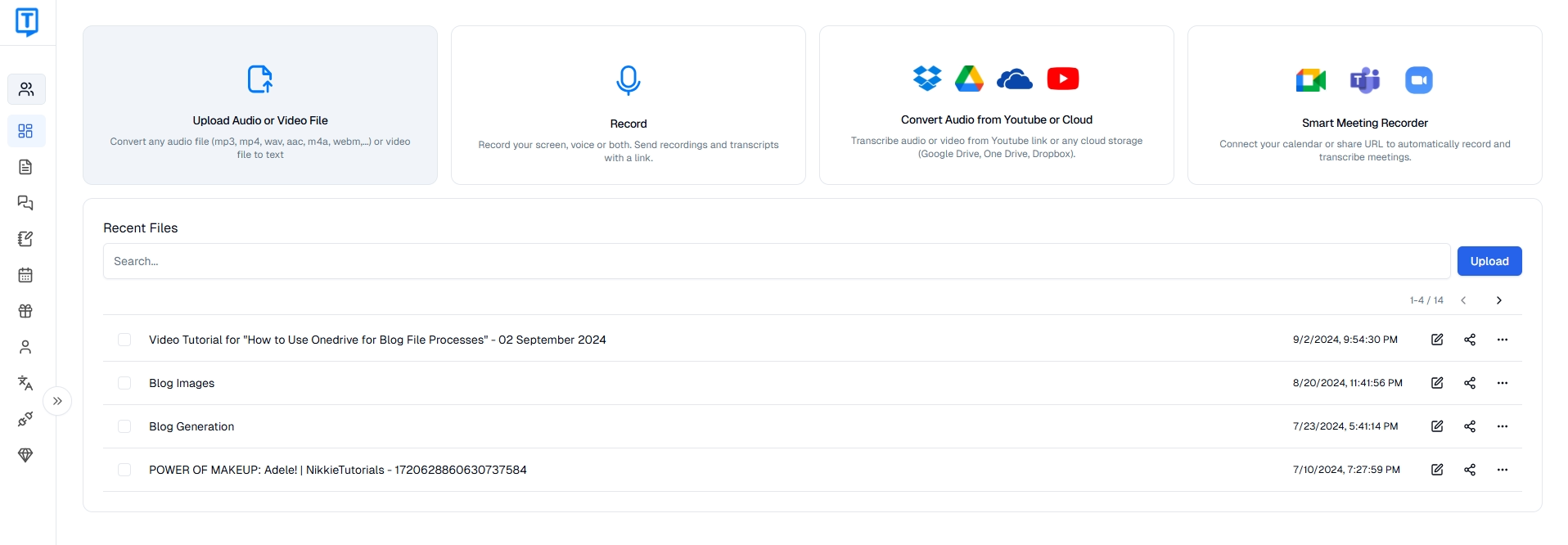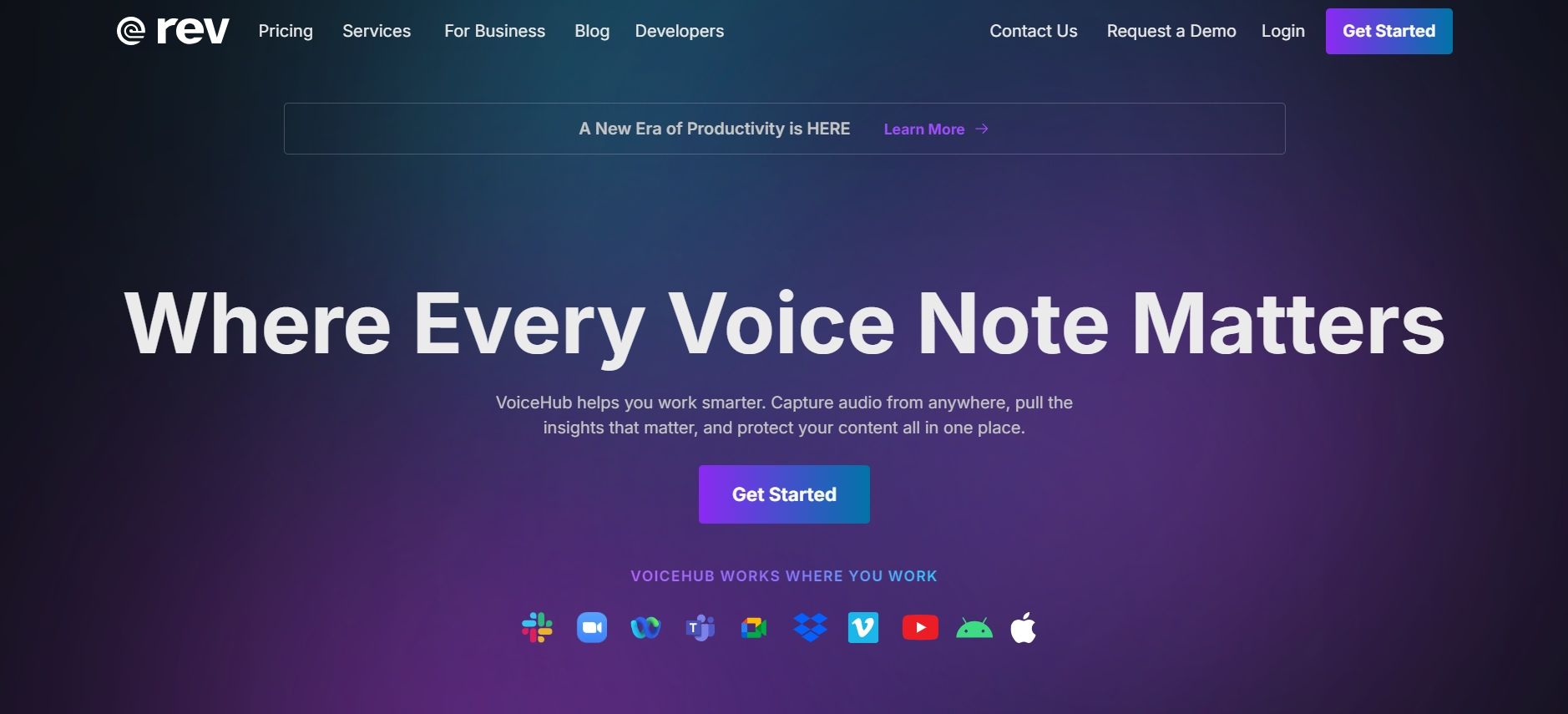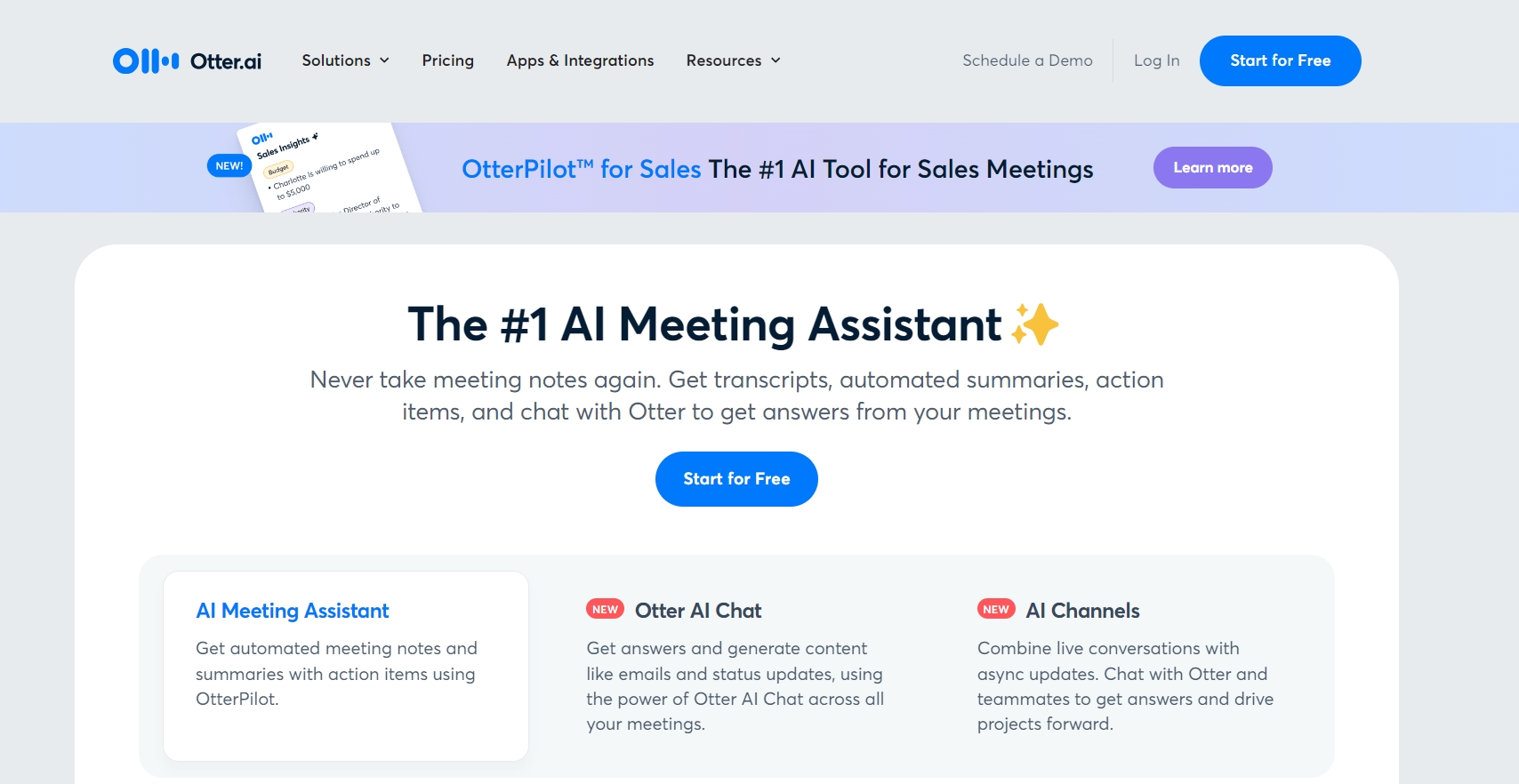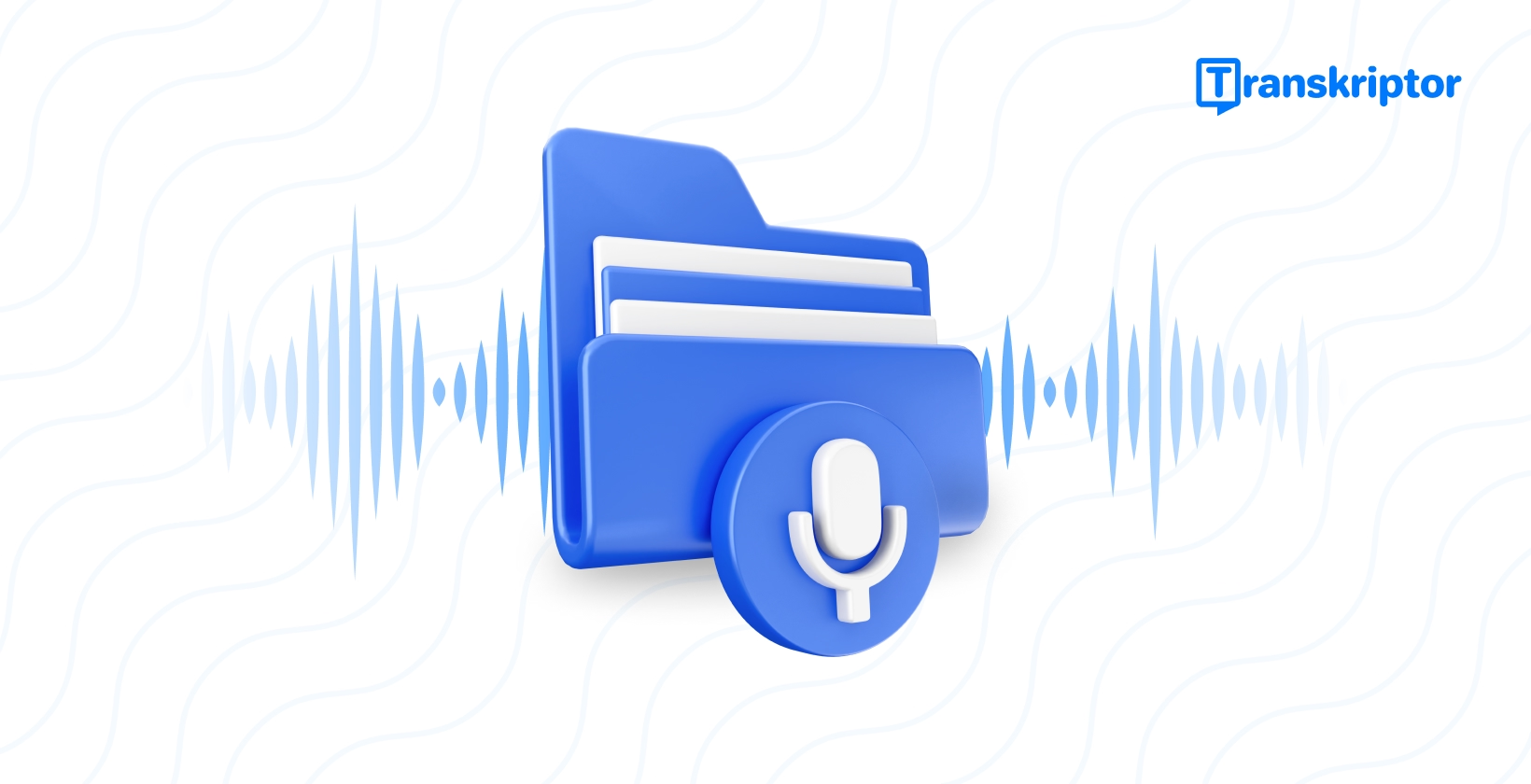However, with increasing demand, many substandard tools became available in the market. These tools struggle with transcription when the sound is low or there’s a disturbance. It’s crucial to set your priorities right and determine the tool's efficiency, cost, and features to choose from, especially if you want to transcribe audio to text .
If you still struggle to find one, you’re at the right place. This guide details transcription, how it works, and its benefits, and suggests the best tools available. So continue reading to find out!
Understanding Transcription: The Basics
Transcription simply refers to the process of converting an audio, whether spoken or recorded, into a digital or written text. It’s typically done to increase accessibility, as everyone can’t watch a video with sound on or listen to an audio, especially people with hearing disabilities.
Another goal of transcription is to make audio easy to use. For example, taking notes of a lengthy meeting or an interview can be tedious; if not, you must scrub through the audio to find a piece of information or use a dictation app to make it easier. Having digital text in the audio makes it easier to organize, sort, and find information.
Here are a few practical applications of transcription:
- Legal: When it comes to transcriptions, the legal industry takes the lead. Legal advisors must keep a record of the events like pre-trial hearings, court proceedings, and many legal meetings. With it, they develop trial plans, identify vital information and contradictions in witness testimony, or keep it for future reference.
- Education: Language barriers, hearing difficulties, technical issues, and others can hamper online learning, but transcribed material can bridge the gap. Written learning material lets students learn at their own pace and helps them quickly find any needed information.
- Medical: Transcriptions are also important in the medical industry, where medical professionals convert audio recordings into written documents, also known as clinical notes. These are a patient’s medical records and contain information like their medical history, treatments, diagnoses, and follow-up plans, including doctor patient relationships . With them, healthcare providers can ensure timely and proper patient care.
- Business: Transcriptions are also crucial to businesses in terms of keeping a written record of customer interactions, meetings, interviews, and other activities for future reference. Businesses can use them to resolve conflicts, review employees during appraisals, and better serve customers.
- Media: To efficiently convey information to audiences and increase engagement, transcription services prove to be effective. Transcribing video and audio recordings of documentaries, TV shows, advertisements, etc, can improve content visibility and accessibility, especially for those with hearing disability.
How Does Transcription Work?
A transcriptionist makes a transcription by listening to an audio or video track and typing or writing out the spoken content. It’s more nuanced than these days, and you listen to an audio multiple times to ensure the accuracy of the written document. It can be time-consuming, but you won’t incur additional costs and ensure consistency.
To ease the burden or spend time on other important tasks, you can invest in software with automatic speech recognition technology that provides a transcript of the audio or video record you input. These aren’t always fully accurate and cost less than $100 to up to four-digit price options. However, hiring a transcriptionist can be much more costly yet accurate.
Below is the table representing the pros and cons of manual and automatic transcription:
|
Manual Transcription |
Automatic Transcription |
|
|
Pros |
|
|
|
Cons |
|
|
Key Tools for Audio-to-Text Solutions
A good voice to text solution must be accurate, efficient, support multiple languages, and easy to use. Below are some of the best choices available to you:
Transkriptor

Transkriptor is a game-changing tool with an advanced suite of features to streamline the transcription process and boost productivity. Its AI-based algorithm minimizes errors and produces a text document with up to 99% accuracy. Users can also benefit from its 100+ transcription language support, rich export options, and compatibility with different platforms and writing tools.
Additionally, the tool allows you to obtain transcripts directly from links, facilitating seamless video and audio content transcription from sources like Google Drive, YouTube, and OneDrive. Its user-friendly platform streamlines the transcription process, perfect for most uses, professional or casual. Although the tool is highly effective for most transcription tasks, content with complex terminology might require slight adjustments.
Rev.com

With its precision-driven transcription services, Rev delivers a seamless solution to convert video or audio files into transcripts within minutes. It supports 36+ languages and is a reliable partner for education, media, and legal professionals for its high-quality output. It also offers a highly efficient human transcription service, which, although more accurate, is more expensive than traditional automated transcriptions.
Otter.ai

Otter.ai boasts cutting-edge technology to transform your audio or video-to-text into accurate transcriptions. What’s great about it is that it integrates with platforms like Google Meet, Microsoft Teams, and Zoom to record the meetings. The tool condenses an hour-long meeting into a few minutes of summaries to promote effective communication and understanding.
The only potential limitation of the platform is that its accuracy may fluctuate with content, including technical or more complex terminologies.
Enhancing Productivity with Speech-to-Text Tools
Speech-to-text tools allow users to convert long audio into text documents within minutes. IT majorly benefits the workflow and overall productivity. Here’s how:
Fast and Accurate Documentation
The implementation of transcription tools has transformed business environments. With these tools, users can create reports, draft documents, and manage communications with a few clicks. The pace has improved remarkably, from medical professionals seeking to maintain an error-free patient record to legal professionals transcribing case notes. These tools save time and minimize typing errors, provided you use tools like Transkriptor.
Boosts Collaboration
Voice-to-text software thrives best in collaborative work environments. Team members can share verbal ideas in a meeting, and the other members can have a transcribed copy within minutes, creating comprehensive minutes and actionable items. It also helps members understand the idea clearly, which encourages engagement and productivity within teams as they can provide input rather than engage in manual note-taking.
Besides that, the generated text document is accessible to all, irrespective of where they are. They can retrieve it at any time in the future if needed.
Advancing Accessibility
Inclusion is an important trait in a workplace, and speech-to-text software makes it possible. It can be a game changer for people with disabilities by providing them with an alternate way to interact with the computer and opportunities to contribute to business development. In addition, people can access these text documents at any time in the future for reference purposes.
Boost Productivity
The primary benefit of such software is improved productivity. According to the employees, taking meeting transcriptions , summarizing customer calls, or writing emails are the most tedious jobs. Now, they can dictate or input the recorded voice notes without manually entering the information into a computer. This saves their precious time, which they can spend on other high-value tasks, and improves overall efficiency.
The Role of Speech Recognition Technology in Transcription
Voice-to-text software like Transkriptor takes in voice input and delivers an accurate and editable transcript on the given device. It works using speech recognition technology, where the computer sorts the auditory signals from the speech and converts them into text using characters called Unicode.
It’s a multi-step process that goes through a complex machine learning model, which starts when a person speaks into a microphone or directly uploads a recorded audio or pasted link into the tool. The sounds make a series of vibrations, which the transcription software picks and forwards to an analog-to-digital converter. It then studies the sound waves and sorts them into their respective types.
The sounds are further segmented into hundredths or thousandths of seconds and matched to phonemes, the smallest unit of speech distinguishing one word from another. For example, an element “p” in tap differentiates it from tab, tan, or tag.
Now, the phoneme runs through a mathematical model network that compares them to known words, phrases, and sentences and translates them as such. The converted text is then presented as a written document of the input audio.
An AI-powered transcription is efficiently designed to match the sounds and phonemes and accurately convert them into text. AI models learn through a feedback loop, which stimulates human intelligence by acquiring and using data. This means they learn from mistakes and deliver better results next time.
Voice-to-Text Software for Different Needs
With increasing demands for automated transcriptions, many tools are now available on the market catering to different needs. To choose the best, follow the tips:
- Accuracy: Accuracy is the most important aspect to look into when choosing transcription software, as you can’t afford to make multiple edits in the generated document. Opt for software with an accuracy rate of over 95%, or you can opt for Transkriptor with up to 99% accuracy.
- Features: When searching for a good transcription app, look for features such as real-time edits, support for multiple languages, and the ability to save and share transcripts.
- Needs: Your decision to choose voice-to-text software ultimately depends on your needs, i.e., whether you’re a casual or a professional user. For example, if you’re a professional user, you need the tool to deliver high accuracy, support multiple languages, transcribe fast, and let you share the transcription. On the other hand, a casual user just needs the tool to generate accurate texts fast. So, make your choices accordingly.
- Compatibility: Some software is limited to specific devices or systems, so check for your device’s compatibility to make a decision.
- Cost: If you need the software once in a while, an expensive product might be an overkill. For such purposes, you can opt for a product that offers a free trial or a rather inexpensive weekly/monthly subscription.
Automating Meeting Notes with Transcription Tools
Transcription tools like Transkriptor streamline the transcription process by leveraging AI technology to convert meeting audio/video recordings into accurate written text. Their intuitive interface lets you seamlessly navigate through the tool, making it easy to manage and access the files and transcriptions.
Transkriptor ensures that every spoken word in the meeting is captured precisely, whether it’s a client meeting or a brainstorming session. All you need to do is record the meeting using a tool like Meetingtor, input the files into Transkriptor, and wait for it to work its magic.
As you get your hands on the text files, you can download them in any required format and organize them in order of urgency, needs, etc. This way, you can access the files easily by typing in a keyword. Or you can integrate it with a third-party tool like Salesforce, which logs it properly as Transkriptor generates a transcription for easy access.
Conclusion
Transcribing your audio is a no-brainer these days, especially how cost-effective and swift it is to obtain an accurate transcript. That’s, however, limited only to good transcription software. And Transkriptor stands out with its intuitive interface, usability, accuracy, and support for multiple languages. It offers specialized tools like punctuation preferences, speaker identification, and formatting options to empower writers to personalize their transcriptions and meet specific requirements.

